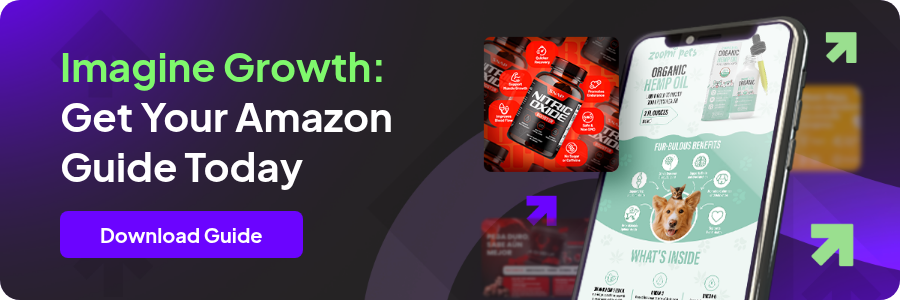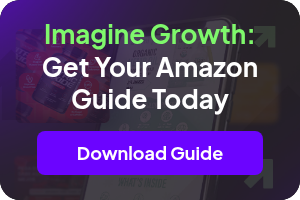As we approach 2025, the landscape of branding is set to evolve dramatically. It’s not just about logos and color schemes anymore; it’s about how brands communicate and connect with their audience through compelling narratives and a unique voice. Here’s how brand storytelling and voice will shape the future of branding:

Amazon Content
Amazon Listings: Specifications and Best Practices
Make your Amazon listings stand out! Discover the key specifications, formatting rules, and expert-backed best practices that help boost visibility and drive conversions.
Reading
Amazon has captured over 37.6% of the e-commerce market and offers a platform where millions of sellers can connect with an even larger pool of buyers. To be successful on Amazon, crafting your perfect product Amazon listing is crucial. In this blog, we’ll delve into the specifications and best practices for creating Amazon listings that not only attract but convert visitors into loyal customers.
What Makes Up an Amazon Listing?
1. Product Title
The product title is the first thing potential buyers see and one of the most crucial elements to aid in search engine optimization (SEO). Every product title should be:
Descriptive: Your product title should be concise yet detailed Including the most important features and benefits of the product.
Keyword-Rich: Aim to incorporate relevant keywords that you believe potential customers might use. Platforms such as Keywords Planner can prove to be helpful.
Concise: Stay within Amazon’s character limit (generally 200 characters) and avoid keyword stuffing.
For Example:
Good: “Stainless Steel Water Bottle, 32 oz – Insulated, BPA-Free, Keeps Drinks Cold for 24 Hours, Hot for 12 Hours, Ideal for Hiking, Camping, and Gym.”
Bad: “Water Bottle 32oz.”
An Amazon listing is a feature that allows sellers to provide more information about the products they offer. These listings are crucial in helping customers make an informed purchasing decision. A successful Amazon listing will include several key components: the product title, images, bullet points, product description, backend keywords, and customer reviews. Each element is important in ensuring that your product (s) is perceived in a positive light.
2. Product Images
High-quality images can significantly boost your conversion rates.
- Images should be of high resolution and be at least 1000 pixels on the longest side to enable the zoom function.
- The main image must have a pure white background.
- Showcase the product from different angles, include close-ups, and highlight key features.
- Use lifestyle images to show how the product can be used by customers and help them envision it in their lives.
- Use Infographics and other images with text overlays to highlight features and benefits.
3. Bullet Points
Bullet points provide a quick overview of the product’s key features and benefits. Amazon typically allows five bullet points, so use them wisely:
Highlight Unique Selling Points. Focus on what sets your product apart.
Keep each bullet point concise while covering critical information.
Include relevant keywords naturally.
Use capitalization and proper punctuation for better readability.
Example:
DURABLE AND SAFE: Made from high-quality stainless steel, BPA-free, and non-toxic.
KEEPS DRINKS COLD OR HOT: Double-wall insulation keeps beverages cold for 24 hours or hot for 12 hours.
LEAK-PROOF DESIGN: Secure screw-on lid prevents leaks and spills.
EASY TO CLEAN: Wide mouth opening allows for easy cleaning and filling.
PERFECT FOR TRAVEL: Ideal for hiking, camping, gym, and office use.
4. Product Description
The product description allows for a more detailed explanation of the product’s features, benefits, and uses. This section is crucial for convincing buyers who need more information before making a purchase.
Engaging and Informative: Write in a way that engages the reader while providing valuable information.
Storytelling: Sometimes telling a story about the product’s creation or its benefits can make it more appealing.
SEO-Friendly: Naturally incorporate keywords throughout the description.
Example:
“Experience the ultimate hydration companion with our 32 oz Stainless Steel Water Bottle. Engineered with double-wall insulation, this bottle keeps your drinks cold for up to 24 hours and hot for 12 hours, making it perfect for any adventure. Crafted from BPA-free, high-quality stainless steel, it’s not only safe but also durable, ensuring it withstands the rigors of everyday use. Whether you’re hitting the trails, heading to the gym, or need a reliable water source at work, our leak-proof design ensures no spills, while the wide mouth makes cleaning and adding ice cubes a breeze.”
5. Backend Keywords
Backend keywords are hidden from customers but crucial for Amazon’s search algorithm. These keywords help your product appear in relevant search results.
Relevant and Specific: Include keywords that are highly relevant to your product.
Avoid Redundancy: Do not repeat words that are already in your product title or bullet points.
Use All Available Space: Amazon provides 250 bytes for backend keywords; use them wisely.
Example:
Keywords: “water bottle stainless steel, insulated water bottle, BPA-free bottle, gym water bottle, hiking water bottle”
6. Customer Reviews and Ratings
Reviews and ratings significantly impact purchasing decisions. Encouraging satisfied customers to leave positive reviews can boost your product’s credibility.
Follow Up: Send a polite follow-up email after purchase, encouraging customers to leave feedback.
Provide Excellent Customer Service: Address any issues promptly to prevent negative reviews.
Respond to Reviews: Thank customers for positive reviews and address concerns in negative ones to show you care.

Best Practices for Amazon Listings
Creating a high-performing Amazon listing is more than just filling out the required fields. Here are some best practices to ensure your listings are optimized to help your store be successful:
1. Keyword Research
Conduct thorough keyword research to understand what terms potential customers are using to find products like yours. Tools like Amazon’s own search bar suggestions, keyword research tools (e.g., Helium 10, Jungle Scout), and competitor analysis can provide valuable insights.
2. Competitive Analysis
Analyze your competitors’ listings to identify strengths and weaknesses. Look at their titles, images, bullet points, descriptions, and customer reviews to see what works and what doesn’t.
3. A/B Testing
Conduct A/B testing to determine which elements of your listing perform best. This could include testing different product titles, images, or bullet points to see which versions result in higher conversions.
4. Continuous Optimization
Regularly update and optimize your listings based on performance data and changing market trends. Monitor your conversion rates, sales data, and customer feedback to make informed adjustments.
5. Enhanced Brand Content (EBC)
If you’re a registered brand, utilize Amazon’s Enhanced Brand Content (EBC) to create more visually appealing and informative product descriptions. EBC allows you to add additional images, text placements, and comparison charts to your listings.
6. Mobile Optimization
Ensure your listings are optimized for mobile users. With a significant portion of Amazon shoppers browsing and buying on mobile devices, it’s crucial that your images, bullet points, and descriptions are easily readable on smaller screens.
7. Compliance with Amazon’s Policies
Always adhere to Amazon’s listing policies and guidelines. This includes providing accurate product information, avoiding prohibited claims, and ensuring your content is suitable for all audiences.
Common Mistakes to Avoid
Even seasoned sellers can fall into some common traps. Here are a few mistakes to avoid:
1. Keyword Stuffing
While keywords are important, stuffing them unnaturally into your title or bullet points can make your listing look unprofessional and difficult to read. Focus on creating natural, readable content that incorporates keywords seamlessly.
2. Using images with poor quality
Using low-resolution or unprofessional images can deter potential buyers. Invest in high-quality photography to showcase your product in the best light.
3. Ignoring Customer Feedback
Failing to address negative reviews or not using customer feedback to improve your product and listing can harm your reputation and sales.
4. Lengthy and complicated bullet points
Bullet points that are too long or filled with jargon can overwhelm customers. Keep them simple, clear, and focused on key benefits.
5. Overlooking Backend Keywords
Many sellers overlook the importance of backend keywords. Ensure you’re using all available space to include relevant search terms that can help your product get discovered.

Final Thoughts
Mastering Amazon listings is part strategy, part creativity—and both are essential if you want to stand out in today’s competitive marketplace. From product titles and images to Enhanced Brand Content and Brand Story, every element contributes to how shoppers perceive your brand and whether they trust you enough to click “buy.”
Great design isn’t just about looking good—it’s about helping people feel good about buying from you. That means being clear, answering unspoken questions, and making your value obvious at a glance.
At NoLimit Creatives, we’ve supported over 4,000 brands in building stronger, more effective Amazon listings through thoughtful, conversion-focused design. And we’d love to help you do the same.
📘 Want to dive deeper?
Download our free guide: Amazon Optimization Essentials—packed with actionable tips to improve your listings, A+ Content, and Brand Story layout.






















